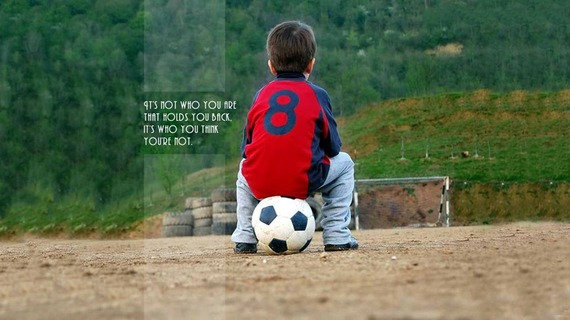Study: Just playing with money makes children more likely to work hard—and give less

Money often does strange things to us—kids included. Many parents have observed that their children may be changed by an allowance, for example, or even just an intense game of Monopoly. And now science bears this out.
According to new research from the University of Minnesota and the University of Illinois at Chicago, even kids who lack concrete knowledge about what money is exhibit behavioral changes just from encountering it.
In a series of experiments on two continents, children between the ages of three and six were first asked to sort an item—either money, buttons, or candy. Then they were assigned another task, such as completing a challenging puzzle, gathering up crayons to help the experimenter set up a task for the next child, or picking out Disney stickers they could take home or share with others.
The experiments revealed money as a powerful motivator for hard work: Kids who sorted money were more likely to spend a longer time working on the puzzle. But children assigned to be money sorters also collected fewer crayons when asked to pitch in with preparations for the next group. They were also prone to taking more stickers, and sharing fewer, than the children who had sorted other items.
“Money is a double-edged sword. It produces good outcomes in terms of concentration and effort, but bad outcomes when it comes to helping, taking, and donating,” said study co-author Kathleen Vohs, a University of Minnesota marketing professor who specializes in the psychology of money. The study is not yet published; it will be featured in the journal Psychological Science, according to the University of Minnesota’s summary of the analysis.
There’s no indication that the findings are limited to specific cultures or age brackets. The conclusions drawn from experiments conducted in the US dovetailed with those from experiments the same research team conducted in Poland. They also tracked findings from studies involving adult subjects from Europe, Asia, and North America, Vohs said.
Many of us take it for granted that introducing children to the concept of money is a wise thing to do early on, especially if the lesson is delivered not just in the context of spending, but also saving and sharing. I certainly did. But three years ago, in the days after Hurricane Sandy socked the US Eastern seaboard, I began developing doubts.
We’d made it through the storm safely, but all around us were signs of the destruction—in the news reports on TV, and in the lobby of our own apartment building, where we met two children who’d come to stay with relatives after several days at home with no electricity. One night, my daughter came into my room, sobbing. Sweetly, earnestly, she said, “I’m worried about people in our community.” My heart swelled with pride. I pulled her close and promised that in the morning we would do something together to aid others.
There were few options, though. Volunteer jobs helping displaced people or cleaning up parks specifically requested no involvement from young children. Rescue workers in hard-hit neighborhoods said they already were inundated with clothing donations. What was needed by then mainly was money. In the morning, I related all this to my daughter and suggested we go to a local store that was collecting cash donations. She could pool $5 or $10 from her piggy bank with my own donation, I explained—at which point she looked up at me, with that face that represents all the hopes and dreams I have for a better future on this planet, and exclaimed, “WHAT?!?!?!”
As the research indicates, our dreams of molding penny-wise little philanthropists don’t always pan out.












